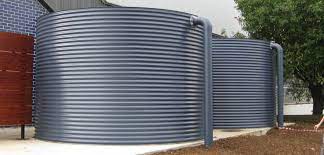Your home’s roof is its first line of defense against the elements, so it’s crucial to ensure that it’s in good condition. One of the most common and troublesome issues homeowners face is roof leaks. A leaking roof can lead to water damage, mold growth, and costly repairs. While no roof is completely immune to leaks, certain types of roofing materials and designs are more susceptible than others. In this blog post, we’ll explore What Type of Roof Is More Likely to Leak and why.
Age of the Roof
One of the most significant factors influencing the likelihood of roof leaks is the age of the roof. Over time, all roofs will deteriorate and become more susceptible to leaks. Asphalt shingle roofs, for example, have a typical lifespan of 20 to 30 years. As they age, the shingles can crack, curl, or lose their granules, making them less effective at repelling water.
Poor Installation
Regardless of the roofing material used, a poorly installed roof is more likely to develop leaks. Proper installation techniques are crucial to ensuring that the roof is watertight. Even high-quality roofing materials can fail if they are not installed correctly. It’s essential to hire a reputable and experienced roofing contractor to install or repair your roof to minimize the risk of leaks.
Roof Pitch
The pitch or slope of the roof can also affect its susceptibility to leaks. Flat or low-sloped roofs are more prone to leaks because they allow water to accumulate, increasing the chances of penetration through the roofing material. Steeper roofs, such as those with a high pitch, are less likely to experience standing water and are thus less susceptible to leaks.
Roofing Material
The type of roofing material you choose for your home can significantly impact its vulnerability to leaks. Here’s a breakdown of some common roofing materials:
Asphalt Shingles:
Asphalt shingle roofs are susceptible to leaks as they age and as the shingles deteriorate. Additionally, strong winds or heavy rains can lift or damage shingles, allowing water to seep through.
Wooden Shingles or Shakes:
Wooden roofing materials, such as cedar shingles or shakes, can warp, crack, or rot over time, making them more prone to leaks.
Metal Roofing:
Metal roofs are generally less likely to leak, but they can develop leaks at seams, fasteners, or if damaged by severe weather.
Slate and Tile Roofs:
Slate and tile roofs are durable and have a long lifespan, but they can develop leaks if individual tiles or slates crack or break.
Flat Roofing:
Flat roofs, commonly used on commercial buildings, are notorious for leaks due to water pooling, membrane damage, or improper installation.
Lack of Maintenance
Neglecting regular roof maintenance can lead to leaks. Debris buildup in valleys, clogged gutters, and the growth of moss or algae can all compromise the integrity of the roof, allowing water to penetrate.
Conclusion
While no roof is entirely leak-proof, understanding the factors that contribute to roof leaks can help you take preventive measures. Regular roof inspections, timely repairs, and proper maintenance are essential in prolonging the lifespan of your roof and reducing the likelihood of leaks. When choosing a roofing material, consider the climate in your area and the roof’s pitch to make an informed decision. By addressing these factors, you can minimize the risk of a leaking roof and protect your home from water damage.




